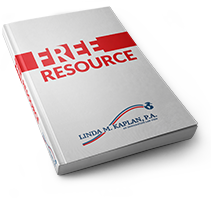At the time of writing this update, it appears that refugee admittance to the U.S. will end on or around July 12th. There are two different legal issues at play. The number of refugees to be admitted each year (which starts on Oct 1st for these purposes) is set annually by the President. In approximately May of 2016, President Obama set the number at 110,000 for the fiscal year starting on Oct 1, 2016. President Trump lowered this number to 50,000 for that same year. It is expected that this number will be reached on or around July 12th. When you think about the number of refugees consider that the U.S. has a population of around 324 million people so 50,000 (or even 110,000) is a relatively small number – around .00015 % of the total U.S. population.
In addition to lowering the number of refugees to be admitted in the current fiscal year, President Trump issued his infamous refugee bans via Executive Orders. Ban # 1 was issued, meet stiff rebuke in the courts, was withdrawn and reissued in a slightly revised form. Ban # 2 was halted by the lower courts but in June the U.S. Supreme Court agreed to review this. The Supreme Court has not issued an opinion on the ban but did allow parts of the ban to be implemented (pending final decision) for refugees who could not demonstrate a close family relationship, education or business ties to a person or an organization in the U.S.
The Statue of Liberty Poem speaks to the humanitarian aspect of immigration. Can this country only provide refuge to a number that is .00015 of our population? Surely, we can do better than 50,000 in a world with more than 65 million displaced persons (51% of whom are children). Some argue that the “huge!” influx of refugees will take jobs from Americans and other fearmongers spread alarm that the refugees are bringing in Muslim terrorists. Anyone who is paying close attention will understand that refugees are the most carefully vetted of all people entering the U.S. Given that most refugees are in camps for years before entering the U.S. vetting process which then takes 2 more years, it is almost laughable to think that a terrorist would plan to stay in a refugee camp for years before entering the U.S. to do us harm. Clearly, terrorists have found faster ways to wreak havoc and the people entering as refugees are those seeking a safe, free place to raise their families.
Apart from the humanitarian aspect of immigration, there are others who focus on the financial benefits of refugee resettlement. Utica, New York has the reputation of being “the town that loves refugees.” After decades of decline, the city is rebuilding by using refugee resettlement for economic revitalization. One fourth of the residents in Utica are refugees. On July 6th, The Public Broadcasting Station (PBS) aired a segment about Utica on their nightly PBS Newshour. I have included a link to this segment at the end of this article. The refugees include Bosnian war refugees as well as ethnic Karens, a persecuted minority in Burma (now Myanmar), many of whom spent years in refugee camps in Thailand before coming to Utica. In this PBS segment, a demography professor at a nearby University explains the economic benefit – “To have an economy, you have to have workers, and you have to have consumers… the influx of refugees to Utica allowed us to retain some smaller industries that were looking for highly motivated labor.” Chobani yogurt has a plant outside Utica. The Chobani CEO has hired hundreds of refugees and is a strong advocate for them. Chobani also has a plant in Idaho where 30 % of the workforce are refugees.
It is comforting to realize that we can do the right thing by resettling refugees and provide an economic boost at the same time.
The PBS segment on Utica shows the human side of resettlement and talks a bit about the process of resettlement. I hope you enjoy this as I did.
- Refugees, Asylum, and other humanitarian relief. - February 9, 2024
- Florida Anti-Immigrant Legislation - May 30, 2023
- Undocumented Immigrants Pay Taxes—Even Income Taxes. - April 25, 2023


